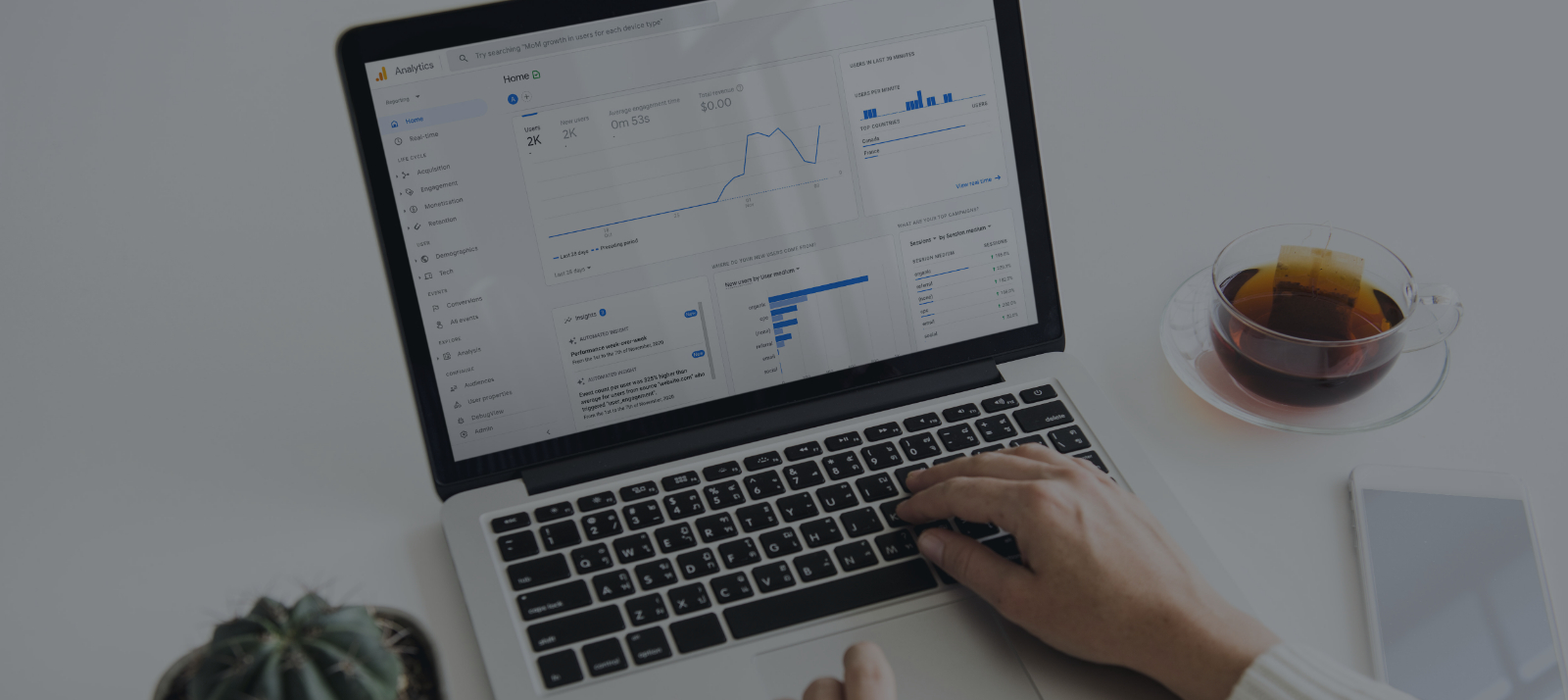On October 14, 2020, Google released a wholesale revision of its analytics platform: Google Analytics 4.
The current Google Analytics infrastructure is based on Urchin, an analytics platform Google acquired in 2005. In 15 years, the digital world evolved immensely and the Google Analytics technology wasn’t on par with recent behaviours changes like cross-channel browsing and user privacy needs.
That’s why Google Analytics 4 aims to deliver a unified view of user behaviours across devices while better respecting user privacy.
There is definitely a major shift in how Google Analytics collects, stores, and filters information, which will impact the way marketers work with the platform. As marketers, we need to make sure we understand that this shift in data collection comes from a shift in philosophy: Google Analytics is no longer about sessions, but about users.
Here’s a quick rundown of what you need to know when it comes to Google Analytics 4.
What are the big updates on GA4?
Before, there were 2 kinds of properties: Universal Analytics (website) and Google Analytics for Firebase (mobile app). Google Analytics 4 can now collect both types of data.
Google Analytics 4 comes with major updates that’ll impact how marketers use Google Analytics to analyze their website data. Here are some of the biggest changes in Google Analytics 4:
1. Event-Based Model vs Session-Based Model
Google Analytics 4 ties all standard events back to the user, instead of the session. The session-based model groups user interactions within a given time frame. The event-based model processes each user interaction as a standalone event. According to Google, “Events can collect and send pieces of information that more fully specify the action the user took or add further context to the event or user.”
Many standard events like a page visit are already collected in Google Analytics 4. You also have the possibility to create custom events or activate Enhanced Measurement (more on that later)!
2. Capture High-Volume Interactions Easily
Enhanced Measurements enables marketers to track common actions without any tag updates. Actions include:
- File Downloads
- Video Views
- Scrolling
- Site Search
- Outbound Clicks
- Page Views
3. Cross-Device Tracking and User-Centric Measurements
Analyze cross-device behaviours more easily with various user identifiers.
“Analytics can measure a single user journey across devices based on the best available user identifiers. You can use Google’s signed-in data, bring your own identifier for signed-in users, or seamlessly use both, and Analytics will always choose the best available option for each situation.” – Google
This new iteration makes it easier to analyze users’ interactions on different devices, get a better understanding of the buyer’s journey and get more accurate user data.
4. Bye Bye Channel Groupings
Channel groupings are completely gone, “medium” is officially the new “Default Channel Grouping”. Therefore, it’s even more important that marketers make sure their UTMs are correctly set from now on (to set UTMs, use Google’s URL builder).
5. More Predictions and Insights
With advanced machine learning models, Google claims that the new Google Analytics platform can easily predict significant trends. Plus, the Analysis Hub report (previously only available to GA360 users) is now available for free. Check it out to explore data, analyze individual users and create custom conversion funnels and more.
For a Smooth Transition to Google Analytics 4
Marketers need to start preparing their transition to Google Analytics 4 sooner than later.
It won’t be done overnight, you can upgrade from Universal Analytics to GA4 but doing so will override your access to the previous platform. A lot of reports existing in Universal Analytics were removed, so you will need to recreate your best these reports in the new GA4.
In addition, members of your marketing, BI and sales team will need to get used to the new platform. The learning curve must also be taken into consideration.
Therefore, for old properties running on the previous iteration (Universal Analytics), Google recommends that site owners set up both property types in parallel.
So, do not upgrade your universal account just yet.
This way, your team has time to get familiar with the new versions, and you can start collecting data in GA4 right away.
When you’ll be ready to make the move in the future, you’ll already have data available in the new version.
If you already used Google Analytics for your app, you can start right away with GA4, the Google Analytics for Firebase project you already use for your app is now a GA4 property.
For new properties, Google Analytics 4 is the default option as of now.
Set up A Google Analytics 4 Property
1. Open Google Analytics and Create a New Property
2. Create a Data Stream For Each Platform (App and/or Website)
3. For Web Data Stream Enable Enhanced Measurements
4. Enable Data Collection (We recommend using GTM for your website, for an app, follow these steps).
Remember, if you own a website, you’ll need one GA4 property with one data stream (your website). If you own a website and an app, you’ll need one GA4 property with two data streams (your website and your app).
Marketers who want to learn more about the New Generation of Google Analytics, visit Google’s skill shop on the subject.
Subscribe to The Shift Factor
Our newsletter keeps you in the know on marketing’s biggest shifts and real examples of brands adapting.
ABOUT THE AUTHOR
Jeff Johnson
Vice-President of Paid Media @ Bloom




Share this: